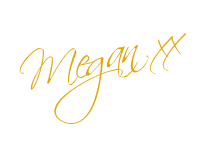I've been sewing!
For a good reason.
One year ago today, on 24th April 2013, a garment factory in Bangladesh collapsed killing and injuring thousands of workers. The fashion industry continues to exploit workers in unsafe conditions, so sewing bloggers and sewers everywhere are uniting to think about who made our clothes - who sewed them, wove the cloth and grew the cotton? The campaign is called the Fashion Revolution and is designed to raise awareness about the value of a garment made with skill and care in our throw-away society.
The idea is to wear a handmade item of clothing inside out and share pictures on social media. I am all for this, but decided to make something complex from sustainable materials and use that for my fashion revolution piece instead.
Enter my two-tone leather jacket...
I made it using the Ziggi moto jacket pattern by StyleArc. Every version I have seen looks so fantastic that I just had to have one myself. I ordered a size 10 based on my measurements and the only alteration I made was to add 5cm to the sleeve length. I am very happy with the fit.
I had leather in two colours, but neither was enough to make a full jacket and both were thicker than the leather usually used in jacket making. I pondered. I sketched. I held leather up in the mirror. I agonised over this for weeks! I made a trial version in fleece to check the fit (I'll blog that one later). I could not decide if a two-tone jacket would work or if the thick leather would work. Then, discussing the dilemma one morning over a coffee, Carolyn said that I should just go for it. So I did. And here I am in the sand dunes overjoyed with my new jacket!
The jacket is actually made from three different fabrics (if you can call leather a fabric). The rusty brown leather, the deep brown leather and some thick, stable lycra (also deep brown) used only in the front side panel and the underarm panel. I chose to use the lycra in that area as I was worried the thick leather would restrict movement if used all over the jacket. I think this did help a bit, but I could probably have also used leather for those panels.
Instead of pins I used 'quilting clips', which are actually just nice, firm hair clips. They worked a treat.
I topstitched the seam allowances on each side of every seam for effect and to compensate for the inability to press or iron the leather into shape. I also quilted the shoulders and upper sleeves. My trusty Bernina 1130, that I bought second-hand around 25 years ago, had no trouble with the leather, even when there were several layers. I used a size 100 leather needle which broke only in the final stages of making the jacket.
You can see here the lovely shaping of the jacket back and the slightly stiff drape of the leather.
I was pleased that I had made the fleece jacket first as I was able to make this jacket without any unpicking. I can hardly believe it as that just never happens to me. I took my time and thought carefully about each step and it just came together beautifully.
I mostly followed the order of construction given in the StyleArc instructions, but I must give credit to Maris for her excellent front zip tutorial and Shams for perfect instructions on inserting the pocket zips and the sleeve zips and gussets.
I think the most difficult part of making the jacket was inserting the lining into the leather shell, mostly because the leather did not want to turn inside out and it was just cumbersome trying to bag out the lining. The excellent drafting helped here though as the jacket just fits together so perfectly with itself and with the lining.
The slight ease across the upper back makes this comfortable to move around in.
Wearing it unzipped.
You can probably tell that I am pretty chuffed with this jacket. I think it might be the best thing I've ever made. And the cost? Around $30.

Yes, you read that right. I only paid for the zips, the lycra used in the side panels and the lining fabric.
The leather...
...cost me nothing. If you are in Perth, Western Australia I will let you in on the secret - a wonderful volunteer organisation called Remida that collects waste materials from businesses around the city and allows members of the public to take their pick (within reason) for a small annual membership fee. It's a crafters paradise and, for the lucky sewer, there are sometimes lovely fabrics and leather scraps. I'm often there gathering inspiration and doing my bit for sustainable fashion.
Location: sand dunes near Jurien Bay, Western Australia.
Dress: Dress No. 2 from Drape Drape 3 by Hisako Sato.
Boots: good old Aussie Blundstones - op shopped.
Pictures: thanks Mr M xx



















































